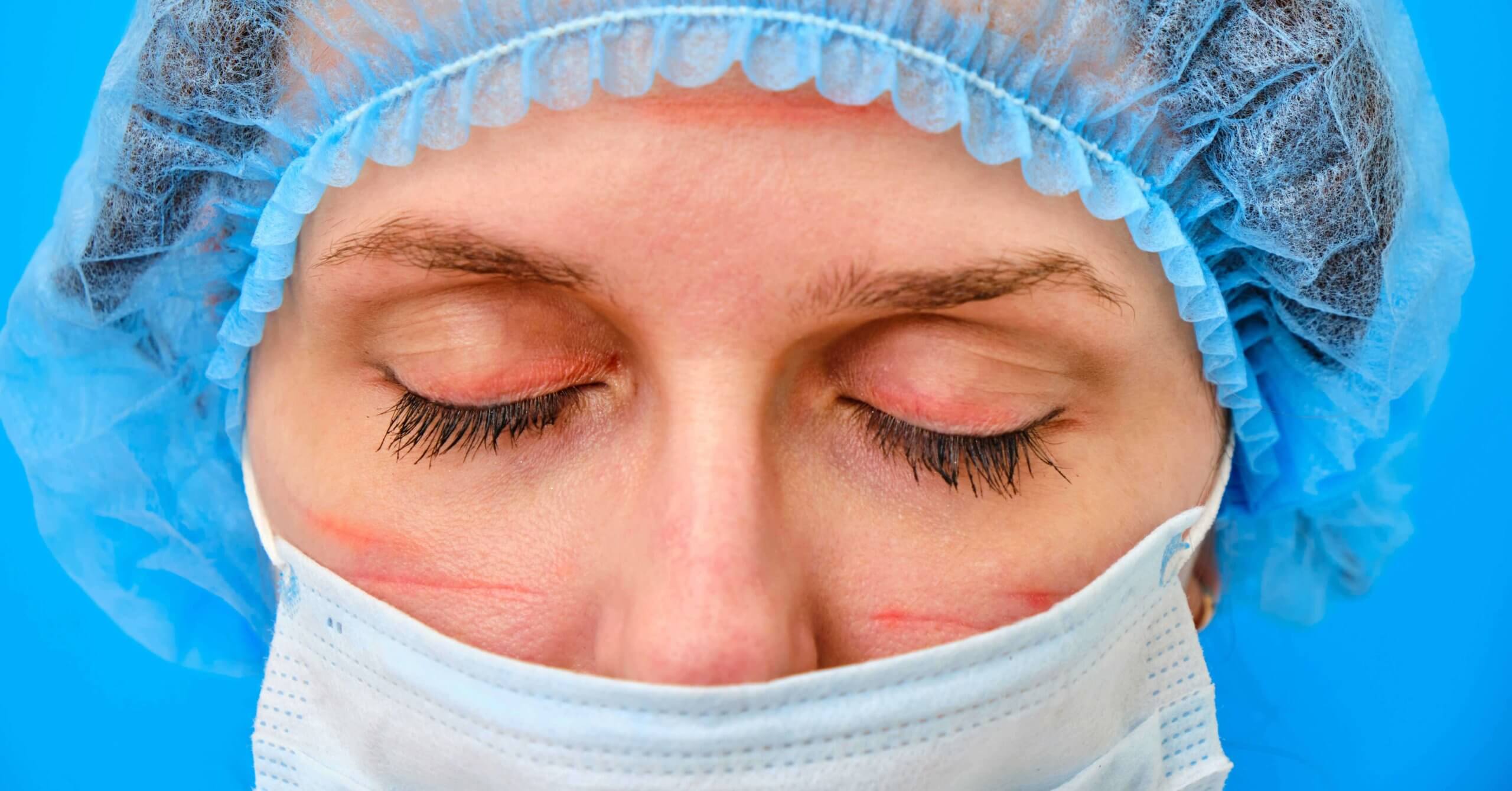Personal protective equipment (PPE) is critical to your safety while caring for patients during the COVID-19 pandemic.
But healthcare workers also should be aware of PPE guidelines to prevent side effects. For example, pressure injuries can occur from wearing the items meant to keep you protected.
Because of the nature of how the virus spreads, those caring for infected patients are required to wear masks in an effort to reduce risk of acquiring the virus.
Working an entire shift in this environment requires wearing a mask almost continually, which has led to the development of tissue damage from moisture and pressure.
High-risk areas include:
- Nose
- Forehead
- Upper cheeks
- Behind the ears
- Occiput
The mask itself and the straps that secure it in place are the culprits. The N-95 mask can pose increased risks to healthcare workers because of its design and purpose compared to paper and cloth masks.
The N-95 is a much firmer, rigid material and requires an appropriate “seal” to the skin to be effective. This creates more pressure on your tissue as well as potential moisture issues.
Reduce tissue damage from masks
Let’s look at some appropriate methods and products that can reduce tissue damage from wearing the N-95 and other masks.
For healthcare workers who wear the N-95 almost continuously during shifts, the NPIAP recommends removing the mask for 15 minutes every two hours. The guidelines also recommend a minimum of at least five minutes without a mask every two hours.
Time without a mask allows capillary reperfusion in the affected area and prevents ischemic tissue damage. This also will allow any moisture that may have built up under the mask to evaporate and the acid mantle to return to normal.
Keep in mind the more frequently you can remove a mask throughout your shift, the lower the risk of moisture and pressure-related tissue damage.
Beyond the removal of the device, preventative techniques include the use of prophylactic products that may reduce skin damage.
Further preventive measures
In the case of the N-95 mask, you must ensure use of all products do not affect the “seal.” Dressings — in the form of transparent films, thin hydrocolloids or thin foam/silicone tape — have a potential to disrupt the ability of a proper seal to form and are not generally recommended.
Skin sealants or liquid adhesive films may be an option to consider primarily to protect the skin against moisture and friction because they do nothing to reduce the pressure. It is important to remove any moisturizers or serums from the skin before the application of the skin sealant or film.
With paper and cloth masks and face shields, the use of the dressings we mention above cut to appropriate size and strategically placed may prove to be effective on the nose, upper cheek and forehead.
Another high-risk area for tissue damage is behind the ears. We have seen a multitude of very creative ways to protect this area. Commercially available products such as Oxyearsand E-Z Wrap Cannula Cushions are excellent options.
Innovative ideas such as sewing buttons to surgical caps, headbands or a small length of fabric that stretches across the occiput can be effective.
Quinn Callander, a 12-year-old Canadian Scout, developed a design that can be downloaded and 3D printed. Even a simple paperclip can get the job done in a pinch.
Additional PPE tips
Some final thoughts to consider in the prevention of PPE pressure injuries include:
- Ensure your N-95 mask is properly fitted. Improperly fitting devices can create areas of uneven pressure (and poor seal in this case) on the tissue.
- If a mask does not fit you properly, try a different size or see if you can modify the mask.
- Use good skin care practices with appropriate moisturizers to ensure proper hydration. Avoid petroleum and oil-based products that prevent proper moisture absorption by the skin and potentially affect the ability of the mask to seal to the skin.
- Skin care applies to the hands as well since they are regularly being washed, which disrupts the normal acid mantle and prevents its re-establishment.
Use these tips, and good clinical common sense, to lower your risk of PPE-induced tissue damage.
Take our online course on Skin and Wound Management.
What do you think?

